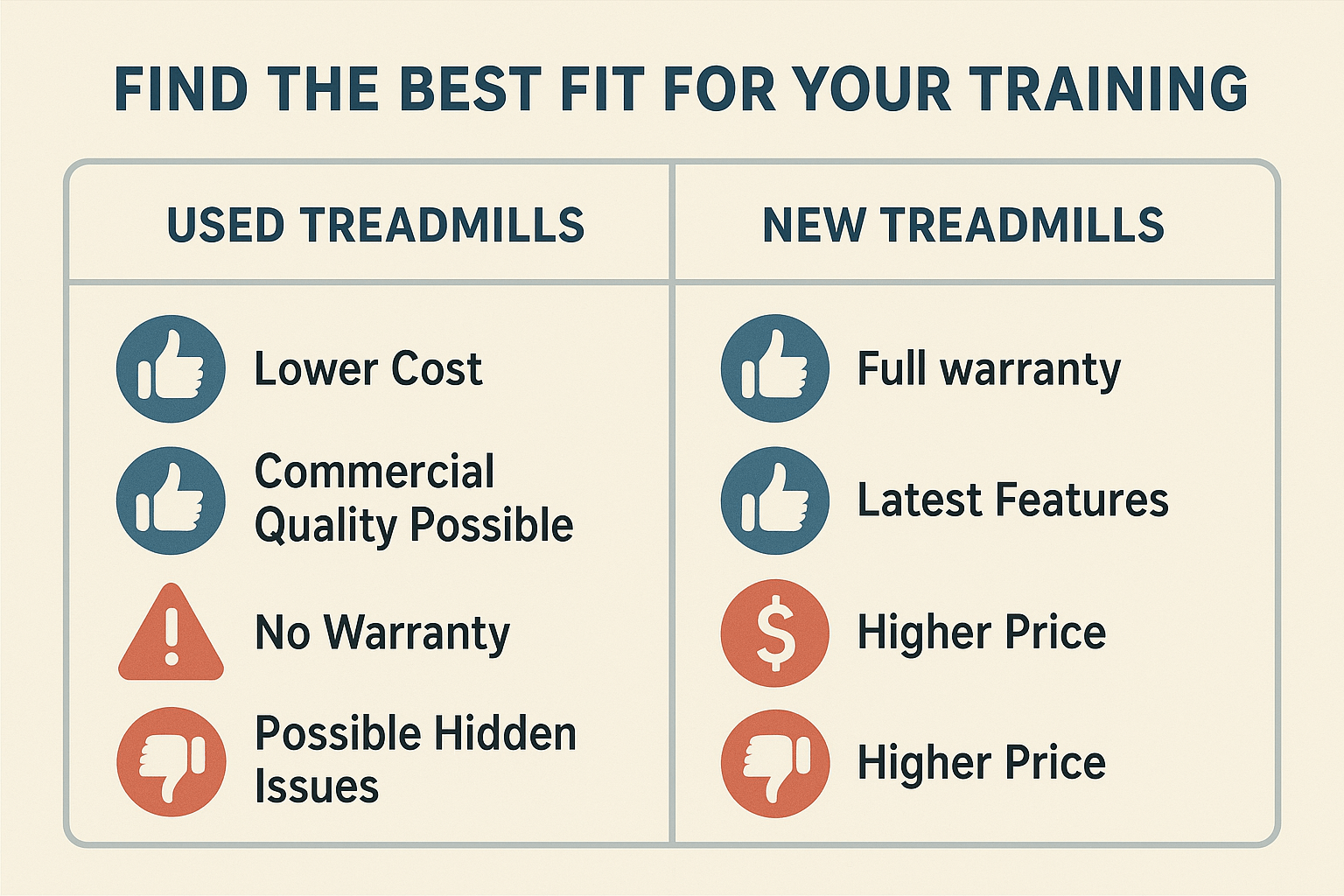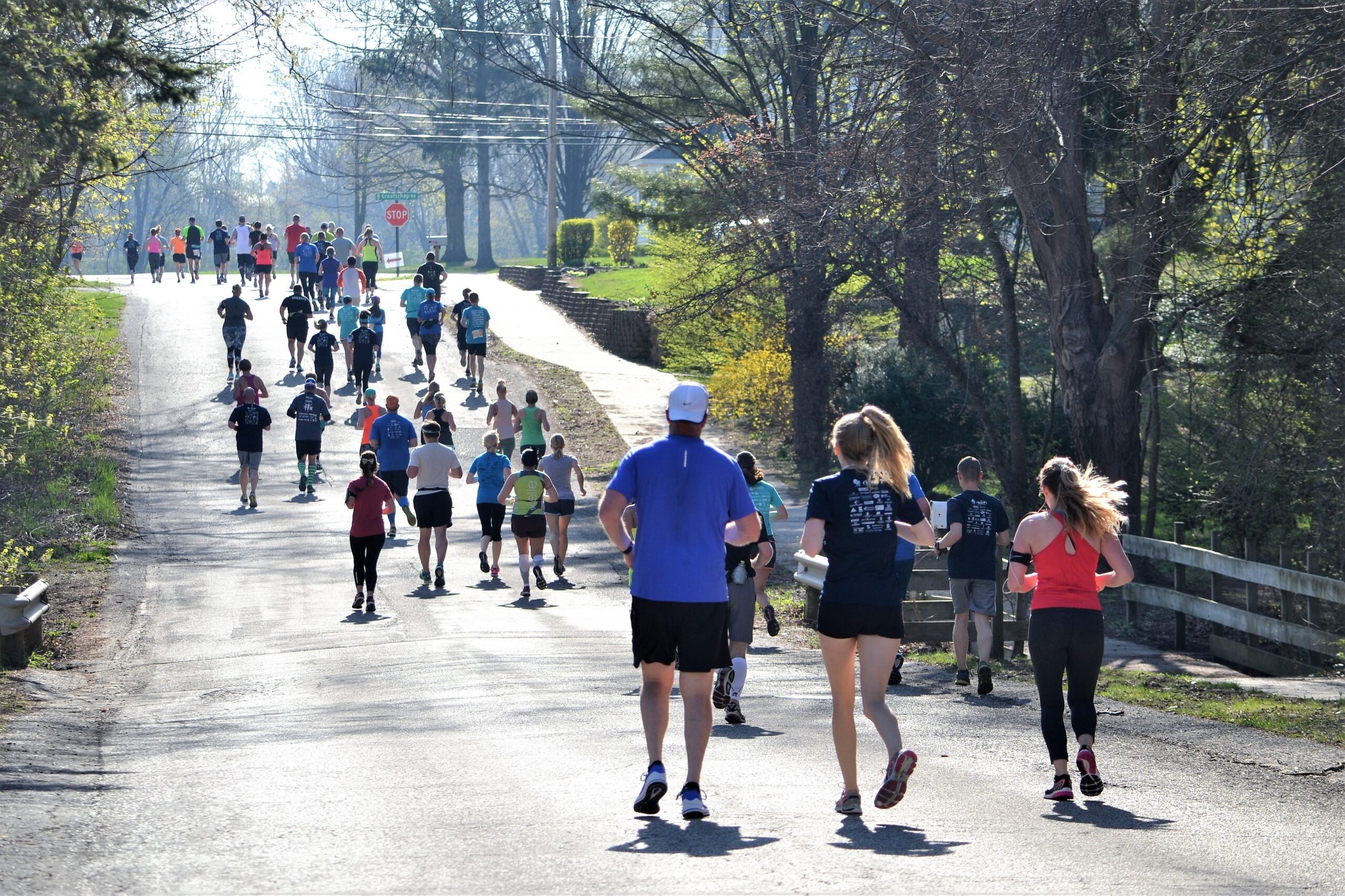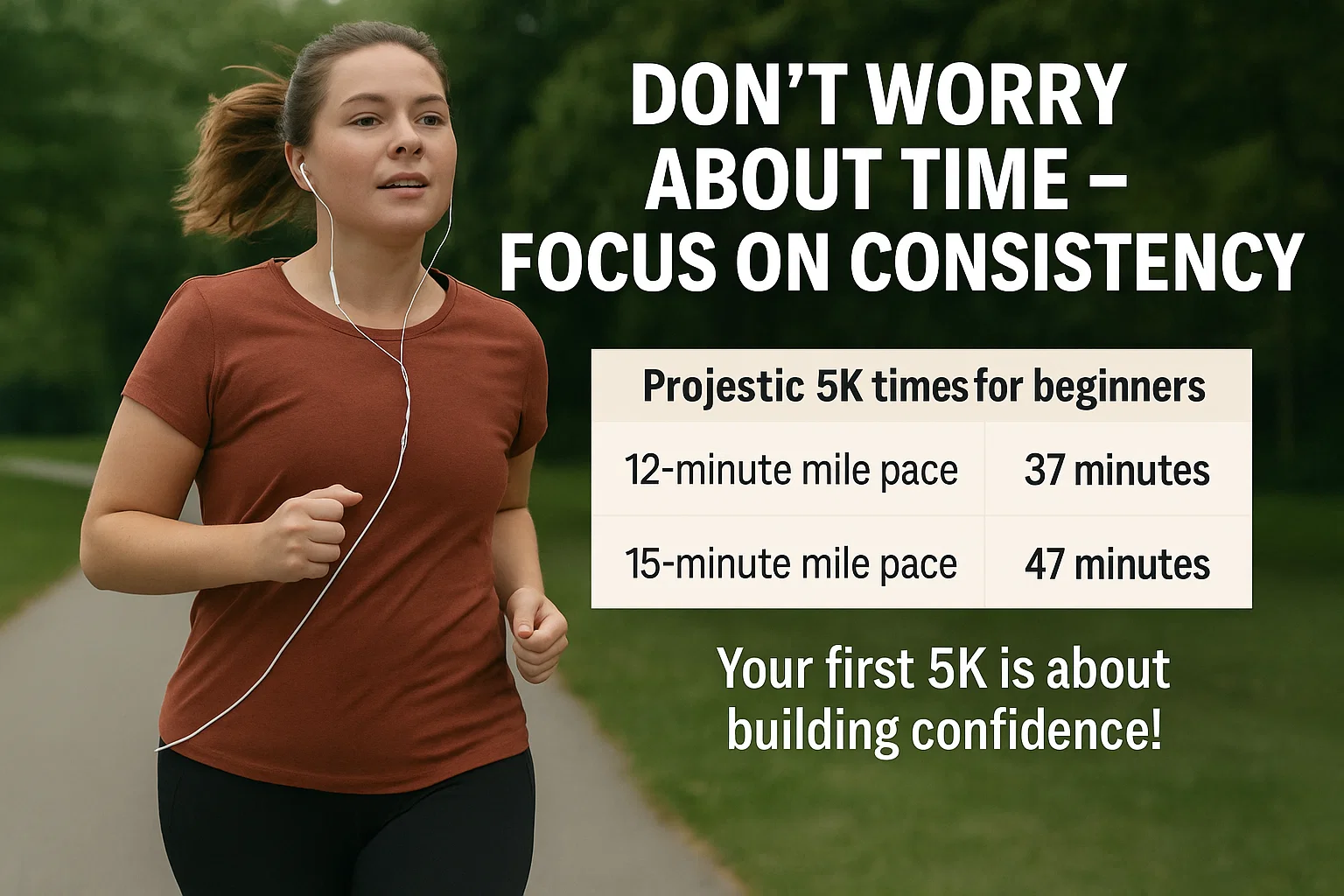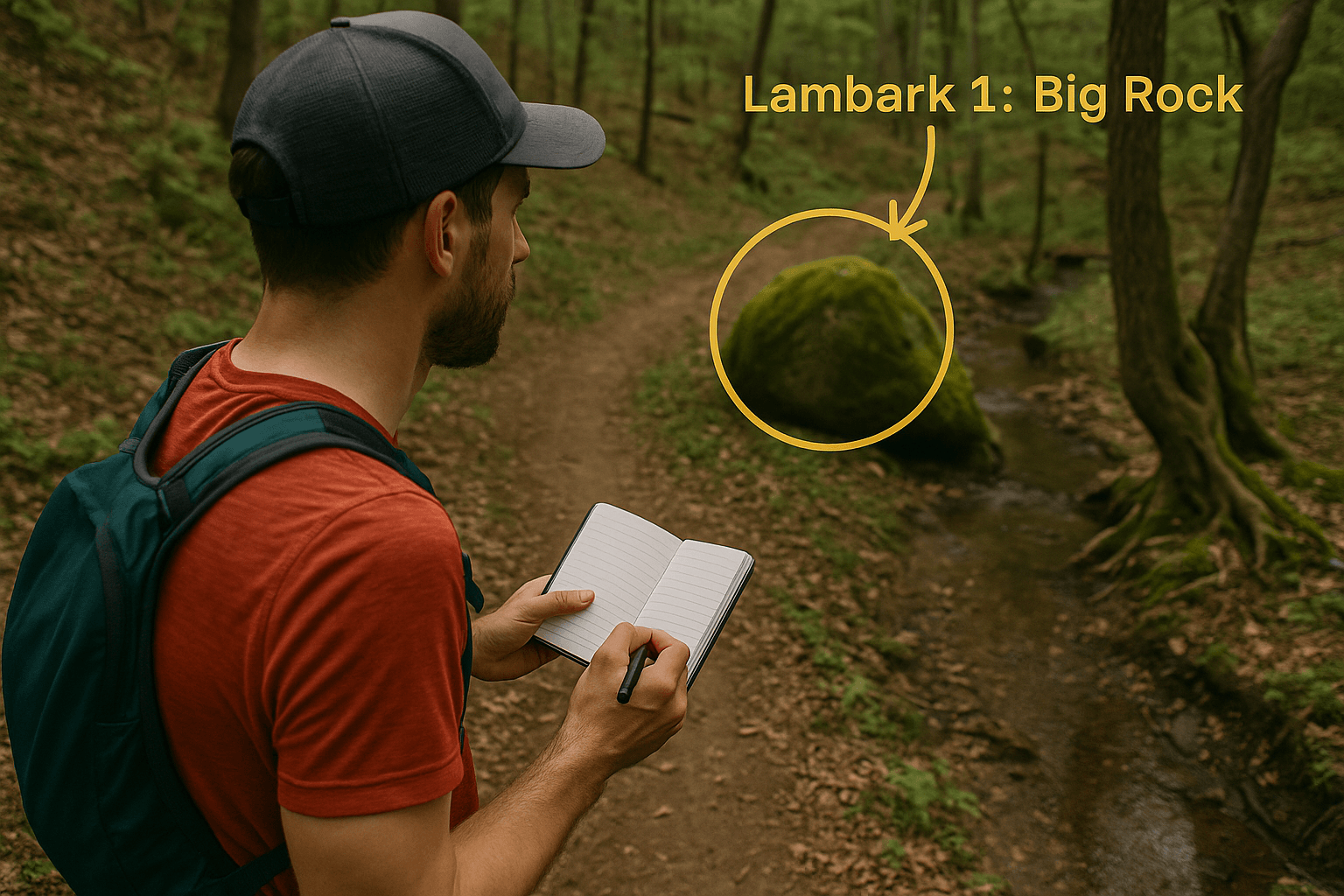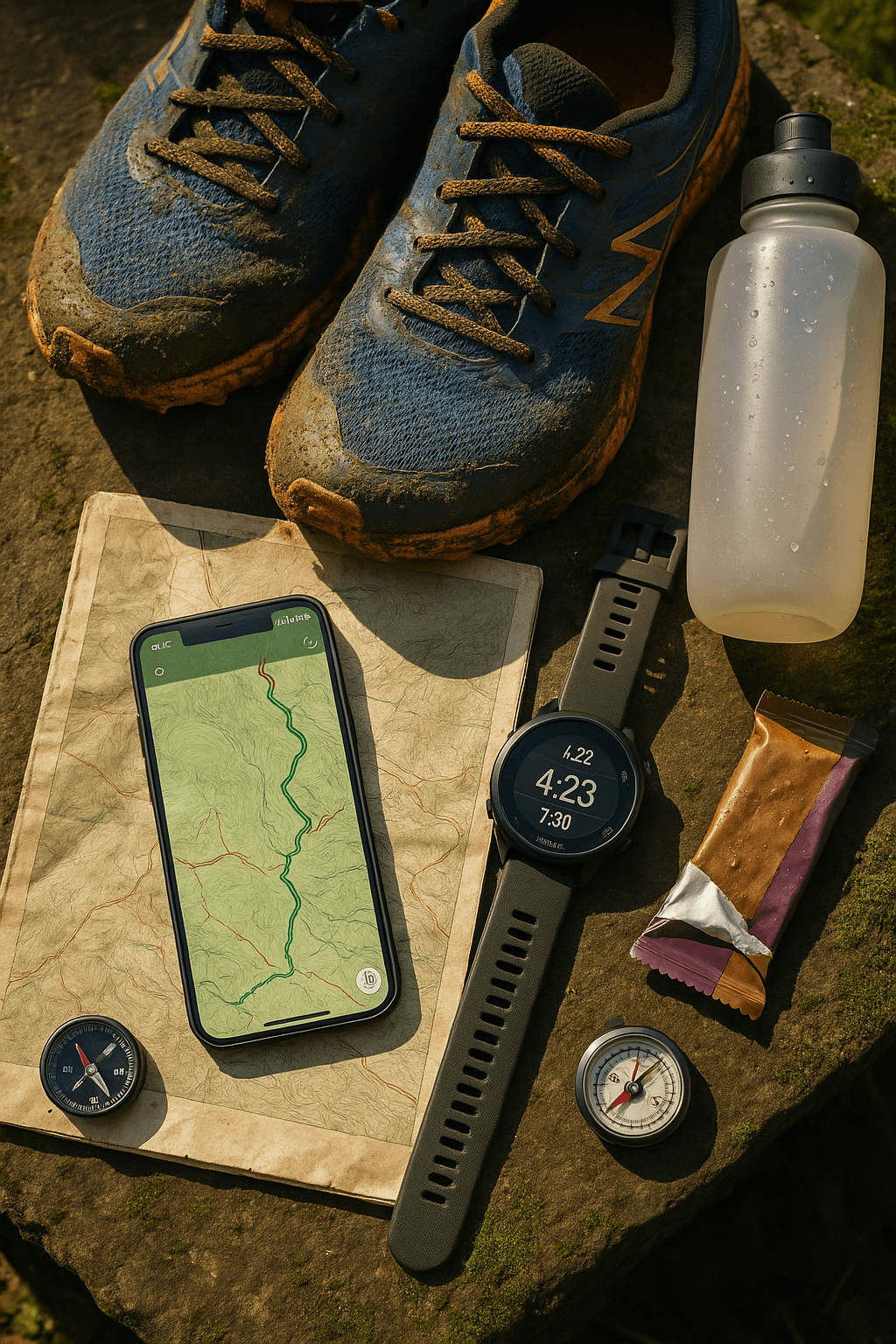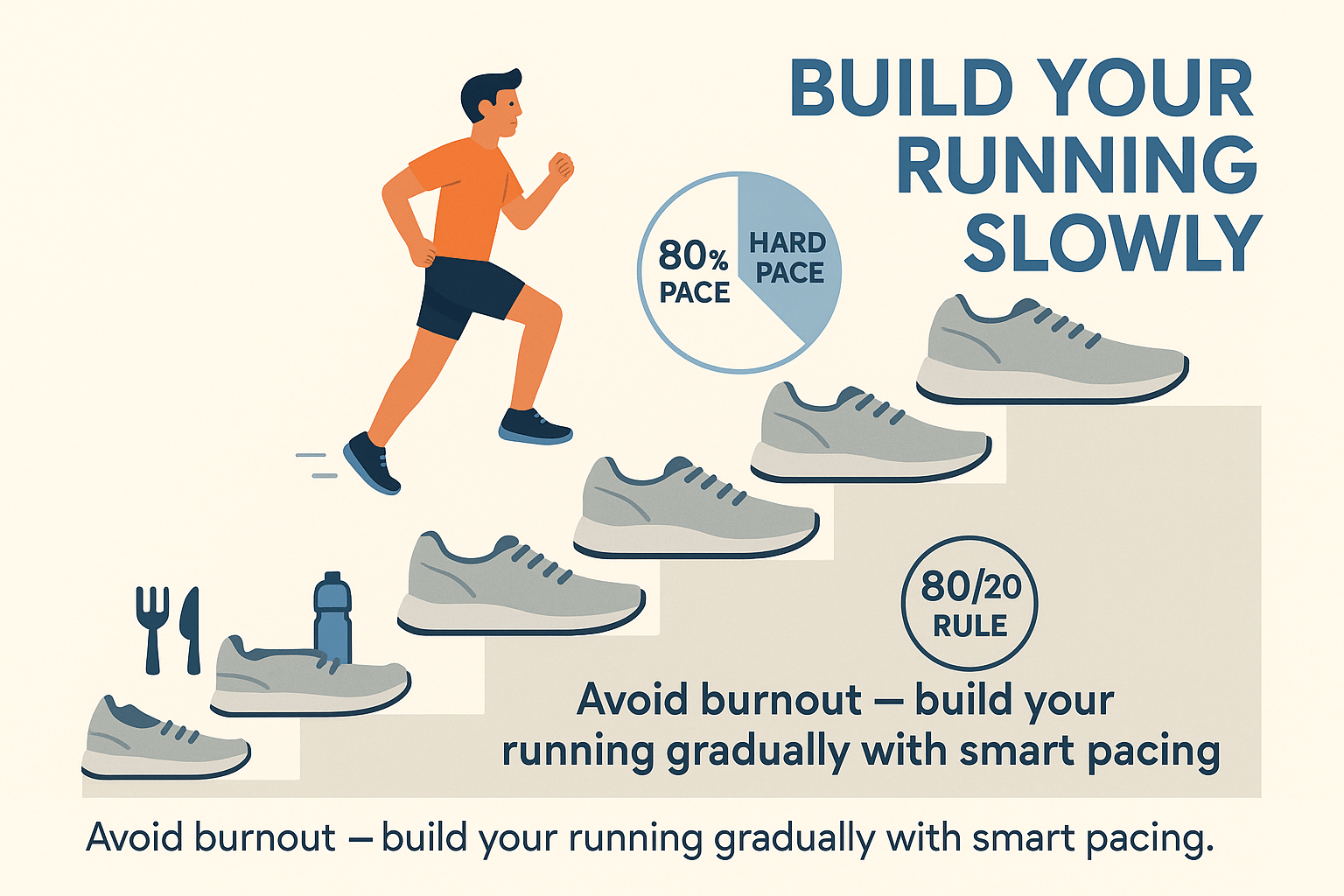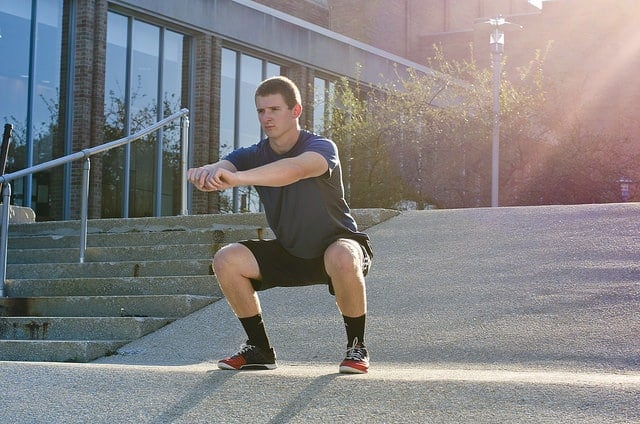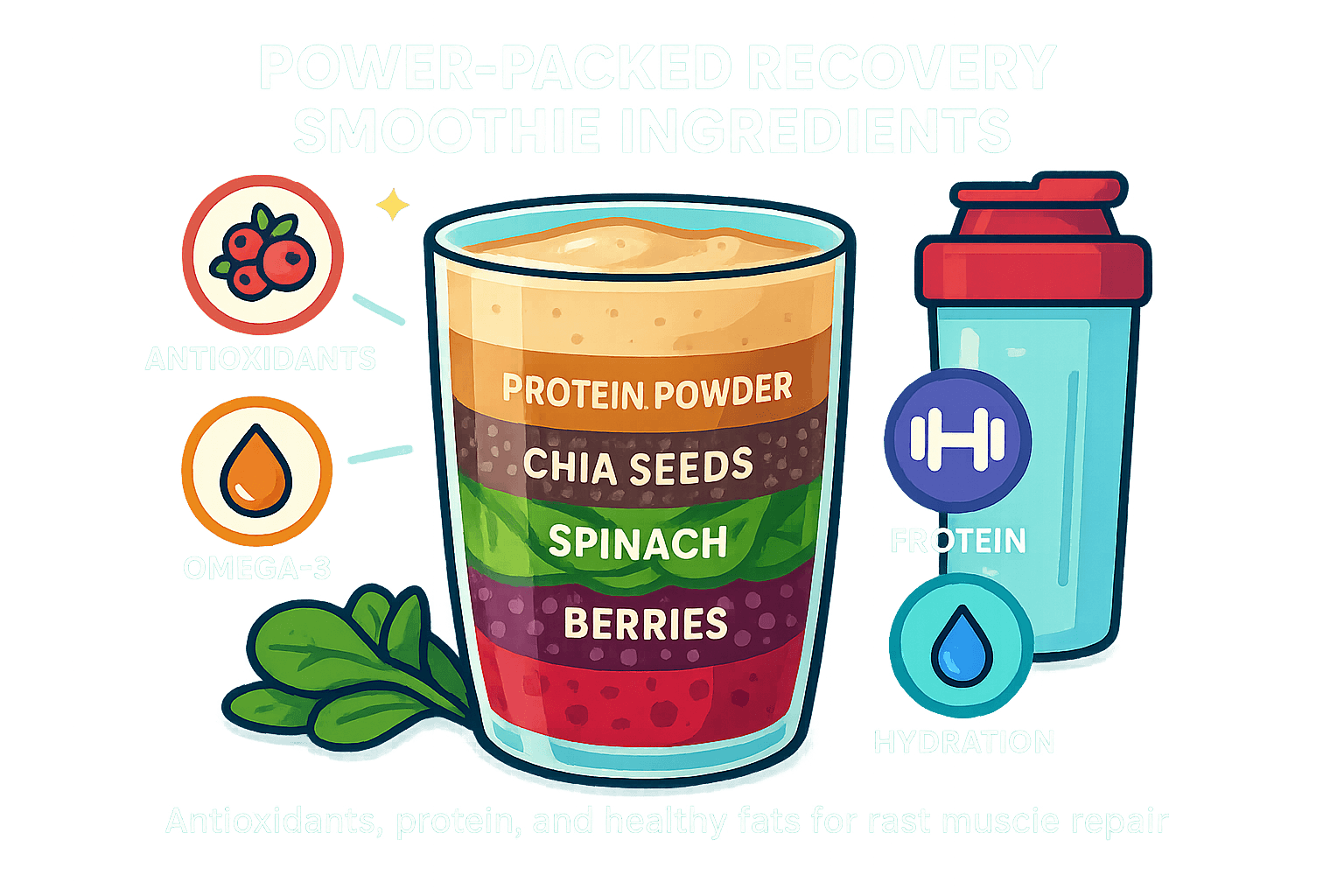Times, Strategy & What It Really Takes to BQ
Let’s get something straight—qualifying for Boston isn’t just a goal. It’s a statement. A finish line, sure—but also a challenge to your discipline, your grind, your grit.
Thousands of runners chase that BQ every year. Most don’t get it. Not because they’re not fit—but because Boston isn’t just a race… it’s a reward. And you’ve gotta earn it.
We’re talking about a race where even the slowest qualifying time still crushes the average marathon finish. The median marathon finish? Around 4:30 for men, just under 5 hours for women. Boston standards? Way ahead of that.
You’re not just toeing the line in Hopkinton—you’re lining up with the fastest 10% of runners on the planet. That’s why a BQ isn’t just a time—it’s a badge of honor.
I’ve said it before and I’ll say it again: Boston doesn’t take cash—it takes commitment.
Let’s break down how you get there.
What Makes Boston So Special (and So Hard to Get Into)
Boston isn’t just another race on your calendar. It’s the marathon.
Started in 1897. Oldest annual marathon in the world. One of the six World Marathon Majors. You can’t buy your way in. There’s no charity loophole or raffle luck here. Unless you’re a pro or doing it for a cause, you run your way in.
That exclusivity? That’s the magic. And it’s why qualifying means something.
Runners talk about getting a BQ like it’s winning an Olympic trial. Because in some ways, it is. Most races just take your money. Boston takes your best.
To BQ, you’ve got to hit a certified time that meets your age and gender bracket—and that just gets you in line to apply.
But here’s the kicker:
Even if you hit the standard, it might still not be enough.
In recent years, 35,000+ people have qualified—but only around 30,000 spots exist. That’s right: plenty of people who technically qualified didn’t get in. Why? Because Boston fills from the fastest down.
That’s why every second counts.
Boston Qualifying Standards: What You Need to Know
So how do you actually qualify?
Here’s what the Boston Athletic Association lays down:
1. Age & Gender Matter
Your qualifying time is based on your age on race day, not when you run your qualifier.
So if you’re 39 now but will be 40 on Boston race day? You get to use the 40–44 age group time.
There are three main categories:
- Male
- Female
- Non-binary (recently added)
And yeah—you need to be at least 18 years old on race day.
2. Your Marathon Must Be Certified
No shortcuts here.
You’ve gotta run your time on a certified course—USATF, AIMS, or whatever your country’s governing body is. Think big city races, officially measured events—not your local fun run or a Strava DIY effort.
3. Timing Window: You Only Get So Long
To qualify for a specific Boston, your race has to happen within a set window—usually starting in September about 18 months before race day.
Example:
- To run the 2025 Boston, your qualifying race needed to happen between Sept 2023 and Sept 2024.
- To get into 2026, you’ll need to run your time after Sept 1, 2024.
Run too early? Doesn’t count.
4. It’s All About Chip Time
Boston uses your net time—the actual time from when you crossed the starting mat to the finish.
So no, it’s not gun time.
If your standard is 3:30:00, you better finish at or under 3:30:00—not 3:30:01. They don’t round up. Not even for half a second. Brutal, but fair.
Pro tip: Don’t aim for the cutoff—beat it. These days, just meeting the standard probably won’t get you in. Aim to be at least 1–2 minutes faster than the published time.
5. The Bar Keeps Moving
Boston qualifying times aren’t set in stone—they’re getting harder. Why? Too many fast runners.
- In 2020, the BAA dropped every time by 5 minutes.
- For the 2026 Boston Marathon, they’re doing it again—another 5-minute cut for most age groups (up to age 59).
That means if your previous standard was 3:30, now it’s 3:25. Welcome to the grind.
Real Talk from the Line
I’ve coached runners who chased their BQ for years. Some missed by seconds. Others finally cracked it by building smarter, not just going harder.
Every one of them will tell you: Boston isn’t just 26.2 miles—it’s a journey.
It’s about patience. Resilience. Showing up again and again.
And when that BAA confirmation email finally hits your inbox? Man, it hits different.
BQ Doesn’t Mean You’re In – The Boston Cut-Off Explained
So you nailed your Boston Qualifying time? First off—congrats. That’s no small feat. But here’s the truth that catches a lot of runners off guard:
Just because you hit your BQ doesn’t mean you’re guaranteed a bib.
Yeah, I know. That stings.
The Boston Athletic Association (BAA) only has so many spots—roughly 30,000 each year—and they give priority to the fastest runners. If more people apply than there are spots (and spoiler: they usually do), Boston sets a cut-off time below the qualifying standard. If your time doesn’t beat the standard by enough, you’re out.
Let’s break it down runner-to-runner:
What’s the Cut-Off, and Why Should You Care?
After registration closes, the BAA stacks everyone up by how far under their qualifying time they ran. This buffer is called your “BQ minus.” The deeper your cushion, the better your chances.
Think of it like this: your qualifying time gets you in line. How far under that time you ran determines how far ahead you are in that line.
So what’s the magic number? That changes every year depending on how many people apply and how fast they are. Some years you only need to beat your standard by a minute or two. Other years? You could miss out even with seven minutes under. Seriously.
Let’s take a lap through recent history.
Recent Boston Marathon Cut-Off Times & Denials
| Year | Field Size | Cut-Off (Under BQ) | Runners Denied |
|---|
| 2017 | ~30,000 | 2:09 | ~2,950 |
| 2018 | ~30,000 | 3:23 | ~5,000 |
| 2019 | 30,000 | 4:52 | 7,248 |
| 2020 | 31,500 | 1:39 | 3,161 |
| 2021 | 20,000* | 7:47 | 9,215 |
| 2022 | 30,000 | 0:00 (all in) | 0 |
| 2023 | 30,000 | 0:00 (all in) | 0 |
| 2024 | 30,000 | 5:29 | 11,039 |
| 2025 | ~30,000 | TBD (~5+ mins est.) | TBD (>10,000?) |
*2021 had a reduced field due to COVID.
Real Stories, Real Frustration
I’ve talked to runners who’ve crushed a marathon, thrown their arms up at the finish line in celebration… only to get the “Sorry, not accepted” email months later.
Like one guy who ran 2:59:45 thinking he was golden for his 3:05 BQ. Turns out, the cut-off that year was 4:52. He needed a 2:59:32 to get in. Missed it by 13 seconds.
Another runner trained her butt off, nailed her BQ, then learned in 2021 that she missed by nearly eight minutes. Oof. That year was brutal.
So What’s “Safe” Now?
Honestly? These days, a 5+ minute cushion is the new standard if you want peace of mind.
The BAA has already tightened the qualifying times for 2026 to slow down the flood. Still, demand is nuts. In 2024, over 33,000 runners applied—11,000+ didn’t get in. For 2025? Over 36,000 threw their names in for roughly 22,000 qualifying spots.
Bottom line: just BQ-ing isn’t enough anymore. You’ve got to beat it. By a lot.
Coach’s Take: Train for the Cushion
If your BQ is 3:30, shoot for 3:25 or better. Got a 3:00 standard? Train for 2:55. Not just to get in — but to feel confident when registration day hits.
And remember: BAA registration happens in waves. First dibs go to those with 20+ minutes under, then 10+, then 5+, and so on. The deeper your cushion, the earlier you get to register. That’s huge.
That BQ Game: Hope, Hustle, and the Dreaded Cut-Off
So, here’s the real talk on the Boston Qualifier: hitting your BQ time doesn’t mean you’re in.
Yeah, that’s the kicker. One guy on a running forum nailed it when he said, “The BQ is 3:30, but the cut-off says you need to beat it by 3 minutes… so why don’t they just say the BQ is 3:27?” You feel that in your soul, right?
But the BAA sticks with the official standard and then trims the field using a yearly cut-off. From our side, that means you’ve got to do more than meet the mark—you’ve gotta crush it.
I remember one runner who spent 10 years chasing their BQ. Finally nailed it. Booked travel the next day. And then came the wait—weeks of nail-biting before finding out if the cut-off would let them in or slam the door.
When the acceptance finally hit their inbox? Straight-up tears. That’s what makes Boston so special. You don’t just register. You earn it. And then you sweat out the verdict.
When to Qualify, When to Apply: Boston’s Timeline, Simplified
Boston always falls on Patriots’ Day—third Monday in April. But don’t think April is when the magic starts. It’s a long game, and if you want in, you’ve gotta plan months—sometimes years—ahead.
Here’s the breakdown:
Step 1: Run a Qualifying Marathon
Your qualifying race needs to happen within a set window—usually from about 18 months to 7 months before race day.
If you want to toe the line in Boston 2025, you’ve got to qualify between September 1, 2023, and mid-September 2024.
Fall races are popular for a reason—they give you time to apply, recover, and build back up for Boston. Don’t leave it to the last minute unless you’re okay living dangerously (and possibly rehabbing instead of training).
Step 2: Registration Opens in September
The BAA opens registration in early-to-mid September. You get a five-day window to throw your hat in the ring.
It’s not first-come, first-served—everyone can apply during that window if they’ve got a qualifying time.
Step 3: Rolling Admissions = Faster Gets First
This is where it gets tense. The BAA rolls out registration in waves:
- Day 1–2: 20+ minutes under standard
- Then: 10+ under
- Then: 5+ under
- Finally: everyone else
So, if you just barely squeaked under your BQ, you’re in the final round. Fingers crossed the field doesn’t fill before your group’s turn.
Step 4: The Wait Begins
After registration closes, the BAA takes a couple weeks to confirm times and do the math.
By late September or early October, you’ll know if you’re in—or if you’re getting that dreaded “we regret to inform you” email.
That email stings. Been there. But it’s part of what makes the “You’re accepted!” message feel like winning a lottery.
What About Charity Spots?
About 20% of Boston entries go to charity runners or special cases (think 10-year streakers, invited elites, etc.).
Charity runners don’t need a qualifying time, but they do need to raise serious cash—usually thousands—for a BAA-approved cause. If time is out of reach this cycle, this is a legit alternate route.
Real Timing Example
Want to run Boston in April 2025?
- Qualify between Sept 1, 2023 and Sept 2024
- Apply in Sept 2024
- Find out in Oct 2024
- Train like mad for April 2025
If you qualify after the reg window closes—say, in October 2024—that time rolls over for 2026. No skipping ahead, no fast-tracking, even if you crush your BQ by 40 minutes.
BQ Planning Tip: Timing is Everything
Smart runners don’t leave it to chance. They map out their year like this:
- Fall marathon for BQ attempt (more recovery time, less pressure)
- Spring marathon as a backup if fall doesn’t go to plan
- Rest, apply, then ramp up for Boston the following April
Whatever your plan, don’t gamble on last-minute qualifiers. And remember: qualifying by a huge margin won’t get you into Boston sooner, but it does help you beat the cut-off and land a better corral.
Bottom line? Run your BQ early, train smart, and be ready to apply when that September window opens. Then comes the real fun—training for Boston.
Want to Qualify for Boston? Start with More Miles
If you want to qualify for Boston, you’re not just chasing a number—you’re chasing consistent, aerobic strength. And that starts with mileage.
Real Data: What the Numbers Say
Strava dug into training logs from over 30,000 marathoners and found something crystal clear: the more miles you run, the better your odds.
- Male BQers ran ~560 miles in the 12 weeks pre-race
- Male non-BQers? Closer to 300 miles
- Women? Same pattern: ~480 miles (BQ) vs ~280 miles (non-BQ)
That’s nearly double the distance. And those who qualified peaked around 55–60 miles per week, versus 40–45 for those who didn’t make it.
Why It Works
Every mile you run adds to your aerobic engine. You’re not just burning calories—you’re building endurance that carries you through mile 23 when your legs start lying to you.
That base lets you hold pace longer, recover faster, and stay in control. Mileage is the foundation. Speed and workouts matter too, but without a strong base, they won’t stick.
Real Runners, Real Results
One guy treated his first marathon like a bucket-list item—ran 30 miles a week, finished in 3:40. Not bad. But not Boston. A few years later, he built up to 50+ miles a week and added structure. Boom—3:12 at age 52. Boston-bound.
Another dude in his 20s went from a 4:48 debut to a 2:59 over six years. How? He increased weekly volume gradually, stayed consistent, and treated his training like a craft.
Word of Caution
Don’t jump from 20 to 50 miles overnight. That’s how runners end up on injury timeout. Stick to the 10% rule—slow, steady growth. It might take a year to build the volume you need. That’s okay. This is a long game.
Run often. Many BQers run 6–7 days a week. The average? Seven runs a week for qualifiers vs. five for non-qualifiers. The more days you run, the more you reinforce fitness—and the more natural running feels.
Easy Days Easy, Hard Days Hard (Stop Racing Every Run)
If you’re chasing a BQ and running every day like you’re trying to impress Strava, you’re doing it wrong.
One of the biggest screwups I see from runners trying to qualify for Boston is running too damn hard on their “easy” days. I get it. You want to feel fast. But if you’re hammering every run like it’s race day, you’re just digging yourself into a hole.
Here’s the truth: if you want to run fast, you’ve gotta run slow. Yeah, I know it sounds backwards—but it works.
You build endurance by stacking miles that don’t beat the hell out of your body. That’s where easy running comes in.
What the Data Says
Strava crunched the numbers. Turns out Boston qualifiers ran about 85% of their miles slower than marathon pace—only 15% of their runs were fast.
The folks who didn’t qualify? They ran 57% of their miles at or above goal pace. Basically, they ran too hard, too often, and probably never recovered right.
Same story with women: qualifiers ran just 23% of their miles fast. Non-qualifiers? A brutal 64%. That’s not training—that’s redlining your way to burnout.
Another study found that runners who kept their easy runs about 30% slower than goal pace hit their targets way more often than those who hovered too close to marathon pace every day.
So yeah, that guy trying to run 3:00 who insists on doing most runs at 7:00/mile? He’s probably breaking down while someone cruising at 9:00 pace is quietly building a monster aerobic base.
The 80/20 Rule (And Why It Works)
Aim for 80% easy, 20% hard. That’s the golden ratio.
Easy should feel conversational. I’m talking 90 seconds, sometimes 2 minutes per mile slower than marathon pace.
If your BQ goal is 8:00/mile, then your weekday runs might be 9:30–10:30/mile. And if that pace feels “too slow,” good—that’s the point. It’s supposed to feel easy.
Running slow lets you stack miles, build your heart, expand your capillary network—all that aerobic engine stuff—without frying your legs.
Then when it’s time for speed work or long runs? You’re actually fresh enough to hit the paces that matter.
Real Talk From the Trenches
A lot of Boston qualifiers say their biggest breakthrough wasn’t from some fancy workout—it was finally learning to slow the hell down on recovery days.
One guy I coached plateaued for two straight cycles running “medium” effort all the time. Once we made him run truly easy 4–5 days a week and only hammer his key sessions, boom—his speed jumped, his mileage went up, and he dropped minutes off his time.
You don’t build speed by sprinting your daily six-miler. You build it by stacking smart volume, then attacking your workouts with purpose.
Bottom line: Run more. Run slow. And save the racing for race day.
Speed Work: Sharpen the Sword
Now—just because we said “easy” doesn’t mean you skip the hard stuff. You still need the sharp end of the stick: goal pace workouts, tempo runs, VO₂ max intervals—the stuff that teaches your body how to run fast and hold it.
The key? Don’t overdo it. One or two hard sessions a week is plenty. More than that, and you’re flirting with burnout or injury.
A solid setup might look like this:
- Mid-week speed workout: intervals, hill repeats, tempo efforts
- Weekend long run: maybe steady at first, but later with goal pace segments or fast finishes
That combo—paired with lots of easy miles—builds the durability and speed you need without frying your system.
Train smart. Pace yourself. Nail your workouts. And leave something in the tank for the next one.
Want to BQ? Here’s the Work That Actually Moves the Needle
Let’s be straight: chasing a Boston Qualifier isn’t about luck. It’s about building speed endurance, dialing in your pace, and doing workouts that teach your body to suffer well and recover smarter.
1. Tempo Runs = Your BQ Workhorse
Tempo runs are where you learn to hold the line when your legs want out. We’re talking that “comfortably hard” zone—right at the edge where you can still think straight but have to work to stay there.
For most, that’s somewhere near 15K to half marathon pace. Or roughly the pace you could hold for an hour if someone told you the finish line had tacos and a PR waiting.
Start with 20-minute tempo efforts and build up. By the time you’re peaking, aim for 6–8 miles straight at tempo pace. These teach your body to buffer lactic acid and stay strong at fast marathon paces. Almost every BQ plan I’ve seen has tempos as the weekly bread and butter.
2. Goal Marathon Pace Runs: Get Real With Your Pace
You’ve gotta practice race pace—not just to train your legs, but to train your brain. You need to feel what 7:15/mile (or whatever your target is) feels like on tired legs.
Best way? Mix it into long runs. Try something like:
- 10 miles easy + 8 miles at goal pace
- 12 miles steady at marathon pace
This builds mental and physical efficiency. It’s not sexy, but it works.
3. Intervals: Build the Top Gear
Speed workouts raise the ceiling. When you boost your VO₂ max and leg turnover, marathon pace feels more doable.
Classic BQ workouts?
- Yasso 800s – 6×800 meters, goal time matches your marathon hours/minutes
- Mile repeats at 10K pace
- Hill sprints – short and nasty, but they build leg strength like nothing else
Intervals train you to suffer. They’re brutal. They’re gold.
4. Long Runs With a Kick
Anyone can shuffle through a 20-miler. But finishing strong? That’s next level.
Try:
- Fast finish long runs (last 5 at goal pace)
- Progression long runs (each section faster than the last)
- Back-to-back hard days (e.g., a tempo Saturday + long run Sunday)
You don’t need these every week. But drop them in strategically during peak weeks. They’re tough—but they teach you how to fight through mile 22 without folding.
⚠️ Heads up: these workouts are high stress. Don’t add them until you’ve built a mileage base. Overdo it, and you’ll be injured before you ever toe the line.
What the BQ Runners Actually Do
Here’s a fun stat: Over 80% of Boston qualifiers said tempo runs and intervals were critical to their plan.
But here’s the catch—they didn’t just run hard. They ran smart.
Some people pull off a BQ on 30–40 miles a week—but those runs were intentional and hard. Like a 26-year-old woman who ran her first marathon on hill-heavy workouts and 3–4 runs a week. Or a dude who ran a 2:58 on ~35 miles/week, just from knowing how to suffer well.
But let me be real: those folks are the exception. For most runners, you need both volume and speed. The combo is what gets you there without blowing up.
Eat to Train, Sleep to Recover
Your workouts don’t mean jack if your body isn’t ready to absorb them. I’ve seen runners train hard and stall for years—then finally hit their BQ once they fixed their nutrition and recovery.
Eat Like a Runner, Not a Rabbit
Marathon training isn’t the time for keto, fasting, or skipping dinner to “cut weight.” You need carbs, protein, and fat to fuel, rebuild, and stay healthy.
- Load up on complex carbs (oats, rice, fruit, bread)
- Get protein every meal (eggs, chicken, beans)
- Don’t be afraid of healthy fats (avocados, nuts, olive oil)
And yeah—some runners need 3000+ calories/day during peak weeks. That’s not gluttony. That’s fuel.
Race-Day Fuel Starts in Training
If you’re not practicing fueling on long runs, you’re training to bonk.
Take in carbs during any run over 90 minutes. Gels, sports drinks, chews—doesn’t matter, just train your gut. Figure out what works and make it routine.
One guy I coached kept missing his BQ by a few minutes. Turns out he was under-fueling during races. We doubled his carb intake (from 30g/hour to over 60g) and boom—he didn’t hit the wall and finally qualified.
Food = performance. Don’t treat it like an afterthought.
Sleep: The Most Underrated Weapon
Want free recovery? Get more sleep.
Your body rebuilds and resets when you’re knocked out. That 6-hour-a-night hustle life might fly at the office, but in marathon training, it’ll wreck you. Aim for 7–9 hours if you want to feel good on your runs and bounce back between workouts.
Can You BQ in Your First Marathon?
So, you’re wondering: “Is it possible to qualify for Boston my first time out?”
Short answer? It’s rare—but yeah, it happens. It’s just not the norm, and you’ve gotta be real with yourself going in.
Most First-Timers Don’t BQ—And That’s Okay
Let’s be honest here: the marathon is a different animal. You can be a solid 10K or half-marathon runner and still get chewed up by the full 26.2.
It’s not just about running fast—it’s about pacing, fueling, staying mentally dialed in when your legs feel like bricks. Most runners need a few marathons to figure that out.
In fact, the stats back that up:
- Sub-3 marathoners (aka BQ beasts) usually have 6 marathons under their belts.
- Even 4-hour runners average around 4 marathons.
- Experience builds wisdom—and grit.
But Yeah, Some First-Timers Crush It
That said, there are unicorns. Runners who show up, lace up, and drop a BQ on day one.
- One 26-year-old woman trained for just 3–4 months at 30–40 miles per week and nailed a 3:34 in her first race—just under the 3:35 standard for her age group.
- A med student (with barely enough time to train) clocked a 3:09 in his debut.
- Another outlier trained 14 weeks at 30–40 miles per week and ran a jaw-dropping 2:58 his first go.
These stories are inspiring—but also outliers. Most of us mortals? We’ll be hobbling past mile 20 just hoping our toenails survive.
What’s a More Realistic Scenario?
Let’s say you’ve run a few half marathons. You’ve got some fitness and maybe a decent time or two.
Here’s the honest math:
- A 1:25 half marathon (solid, fast) predicts around a 3:00 full. If that’s your wheelhouse and you’re 35 and male, you’re already flirting with BQ pace.
- But if your half PR is 1:45, expecting a 3:10 marathon (the BQ standard for many men) on your first try is, let’s face it, a big leap.
Could it happen? Sure. Should you bet your whole season on it? Probably not.
Coach’s Advice: Don’t Chase It Blind
If it’s your first marathon, make BQ your stretch goal, not your only goal. Train your butt off, absolutely. Go all-in. But also set a backup target like “finish strong,” “stay steady,” or “break 4 hours.”
Use the race as a launchpad. Learn how it feels to hit the wall. Learn where your fueling plan holds up—and where it doesn’t.
Learn how your mind reacts when your legs are screaming but the finish line’s still miles away. That stuff? You don’t get it from training alone.
Timing Is Everything—And Sometimes Age Is On Your Side
Here’s a little silver lining: the older you get, the easier the BQ times get. Not dramatically, but enough to matter.
There are folks who never sniffed Boston in their 30s but finally got in at 50 because:
- The standard eased up a bit
- They kept training consistently
- They got smarter about how to race
BQ doesn’t care how long it takes. Whether you hit it on try #1 or try #10, the result feels just as sweet.
What If You Miss the Boston Qualifier?
So, you trained your butt off for months. Race day came. You gave it everything… and still didn’t hit the Boston qualifying time.
First off—breathe. Yeah, it stings. I’ve been there. So have a lot of runners. But listen: missing a BQ doesn’t define you. It just means your story isn’t done yet.
Here’s what to do when Boston says “not this time.”
Step 1: Break It Down (Not Yourself)
Don’t spiral—analyze. Where did it fall apart?
- Did you hit the wall in the last 10K? Super common. Could be a fueling issue or just not enough long-run endurance.
- Did you go out too hot in mile 1? Pacing error. Rookie mistake. Happens to veterans, too.
- Did the hills eat you alive? Might need more strength work or hill repeats.
The point? Pinpoint what held you back so you can fix it. Every race has a lesson if you’re willing to look for it.
Step 2: Try Again (If Timing Makes Sense)
If you’re still in the qualifying window, you’ve got options. Some runners miss in October and squeeze in another attempt at CIM in December. It’s fast, flat, and perfectly timed.
But don’t just sign up tomorrow without thinking it through. Your body needs to recover. Racing marathons back-to-back is brutal unless you’re built like a tank.
Rule of thumb: 6–8 weeks between hard marathons, minimum. More if you’re nursing fatigue or injury.
One guy I know missed his BQ by 3 minutes in November—signed up for a May marathon that same day. Smart move. Gave him time to train, recover, and come back better.
Step 3: Get Fast Before Going Long Again
If you missed by a big margin—like, “I wasn’t even close”—you might need to zoom out.
Take a break from the 26.2 grind. Focus on shorter stuff. Work on your 10K and half-marathon speed for the next 6–12 months. You’ll build speed, raise your lactate threshold, and come back stronger.
Real example: Coach Greg McMillan talked about a 48-year-old runner named Becky who couldn’t crack 3:50 for her BQ. They paused marathons and trained her up to a 48-minute 10K and a 1:47 half. Next marathon? She nailed 3:50. That break made all the difference.
Sometimes you gotta back off the gas to get there faster.
Step 4: Choose a Better Course (or Season)
Was the race too hot? Too hilly? Too crowded? Logistics a nightmare?
Next time, take control of the variables. Pick a race that suits you: fast, flat, cool temps, well-organized. Don’t just sign up for the local race because it’s close—sign up for the race that gives you your best shot.
Step 5: Shift Your Mindset
Missing a goal hurts. Missing by 10 seconds? That’s next-level pain. But don’t let it crush you.
Turn it into fuel. I’ve seen runners miss by a minute, then train like absolute monsters and come back to crush it.
One guy missed by 1:20, then toughed out a freezing cold winter marathon and got it. Another missed by 10 seconds and came back like a bat outta hell. Use the sting. Let it sharpen you.
Step 6: Recover Before You Reload
After the race, let your body heal. I’m talking:
- Hydrate like it’s your job
- Eat real food (yes, that pizza is earned)
- Sleep like a teenager on summer break
- Cross-train lightly or jog easy—don’t jump back into training too soon
Races beat you up more than you think. Respect the recovery. Then, once your head’s clear and legs feel good, plan your comeback.
Step 7: Get a Second Set of Eyes
If you’ve taken multiple shots and keep coming up short, bring in help. That could mean hiring a coach, joining a structured plan like Pfitzinger’s, or simply picking the brain of a more experienced runner.
Fresh eyes can spot what you missed—maybe it’s your training intensity, your pacing, your nutrition, or even your recovery habits.
There’s a whole community out there. Reddit, Strava groups, local running clubs—they’re filled with runners who’ve been exactly where you are. Tap into that knowledge.
Step 8: Don’t Burn Out
Don’t fall into the trap of marathon after marathon, year after year. That grind breaks people down.
If you’re feeling mentally cooked or physically drained, it’s okay to take a season off. Focus on fun runs. Hit some 5Ks. Rebuild the fire.
One guy I know? Took 26 years to get his BQ. Missed by 2, 4, then 6 minutes—but kept coming back. That’s the long game. That’s heart.
You’re Not Done
BQ’ing is supposed to be hard. That’s what makes it so sweet when you finally get there.
Missing it? That’s just part of the journey. And honestly—it’s the near-misses that make the success even better.
You didn’t fail. You’re just not finished.
Keep showing up. Keep tweaking the plan. Keep running.
Because the dream isn’t just Boston.
It’s earning your way to that starting line.
Final Thoughts from Coach Dack: Boston’s No Accident. You Earn It.
Let’s be real—qualifying for Boston is hard. Brutally hard. And that’s exactly what makes it worth chasing.
A BQ isn’t some lucky break. It’s not handed to you. You build it—one early-morning run, one smart workout, one tough decision at a time. You grind for it. You bleed for it. You fight through setbacks, bad races, long plateaus, and days where you wonder if you’re good enough.
But you keep going.
Because here’s the truth I drill into my athletes: you don’t qualify for Boston by luck—you get there on purpose.
Every mile you log when you’d rather stay in bed. Every stretch, every healthy meal, every skipped shortcut—that’s you laying another brick. And someday, you’ll look up and realize you’ve built the path to Hopkinton with your own damn hands.
BQ Isn’t Just a Time—It’s a Rite of Passage
When it finally happens—when you see that finish time tick down below your standard—it’s not just a number. It’s years of work finally clicking into place.
Runners have told me that the moment they hit their BQ felt bigger than running Boston itself. Because that’s the moment you earned your way in.
One of my runners called it a “rite of passage.” He was right. Boston isn’t just a race—it’s a milestone. It means you set a goal that most people would call crazy… and you made it real.
Still Chasing the BQ? Here’s Your Playbook
If you’re still grinding toward that qualifier, I see you. I’ve been you. And I can tell you—it’s possible. But you’ve got to be strategic:
- Set stepping stones: Shave 5–10 minutes off your current PR. Get under 4:00. Then under 3:45. Break it down and build momentum.
- Volunteer at Boston or run the course unofficially with friends. Soak in the energy. Let it fuel you.
- Surround yourself with people who get it. This isn’t a casual goal. You need training partners who respect the hustle.
- Keep the joy alive. If training starts killing your love for running, it’s time to reassess. BQ goals are big, but they shouldn’t burn you out.
Use Every Tool in the Toolbox
If you’re serious about that BQ, treat it like a mission. Use the data. Use the plans. Test yourself.
- Pace calculators (like Greg McMillan’s or Jack Daniels’ charts) will show you what you need to hit at shorter distances to be in BQ shape.
- Run a half marathon at goal pace—if you can do that and feel strong, you’re getting close.
- Use a heart rate monitor to make sure your easy days are actually easy and your workouts are hitting the mark.
- Grab a BQ-focused plan from a trusted coach—or better yet, get help tailoring one to you.
When You Line Up in Hopkinton…
Here’s what I want you to picture. You’re standing in Hopkinton, race bib on, nerves buzzing. And you know—you earned this.
Those 26.2 miles through New England? They’re not just a race. They’re your reward.
You’ll fly past Wellesley and hear the scream tunnel.
You’ll grind up the Newton hills and dig deep over Heartbreak.
And when you turn onto Boylston Street, you’ll run with the pride of someone who refused to quit.
Boston is tough. But so are you.
The only way to get there is to keep showing up. Keep dreaming big. Keep training smart. And when that finish line finally comes into view?
You’ll understand what I mean when I say:
“Running Boston is the dream. But earning Boston? That’s the real victory.”
Stay in the fight.
Train smart. Run hard. And never, ever give up on your BQ.
I’ll see you on Boylston.
— Coach Dack

